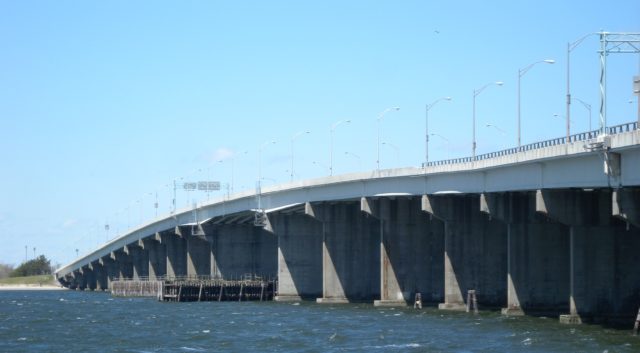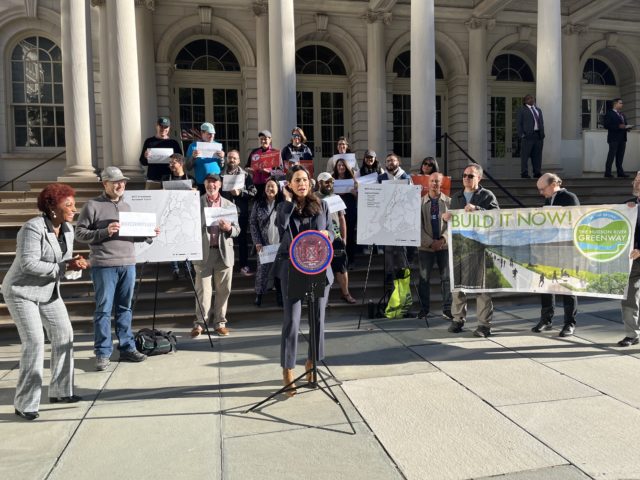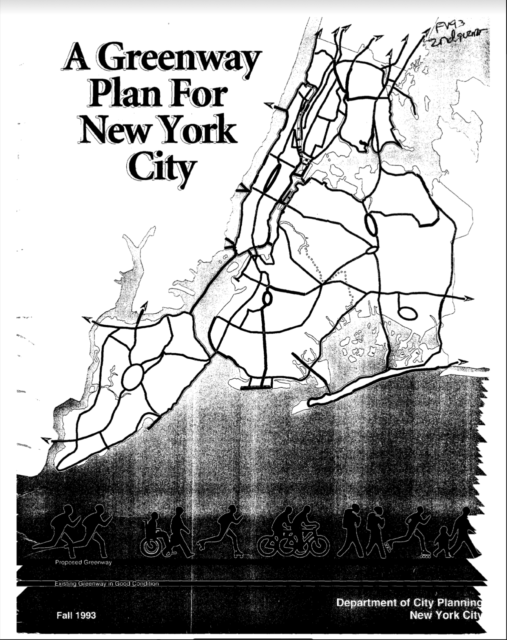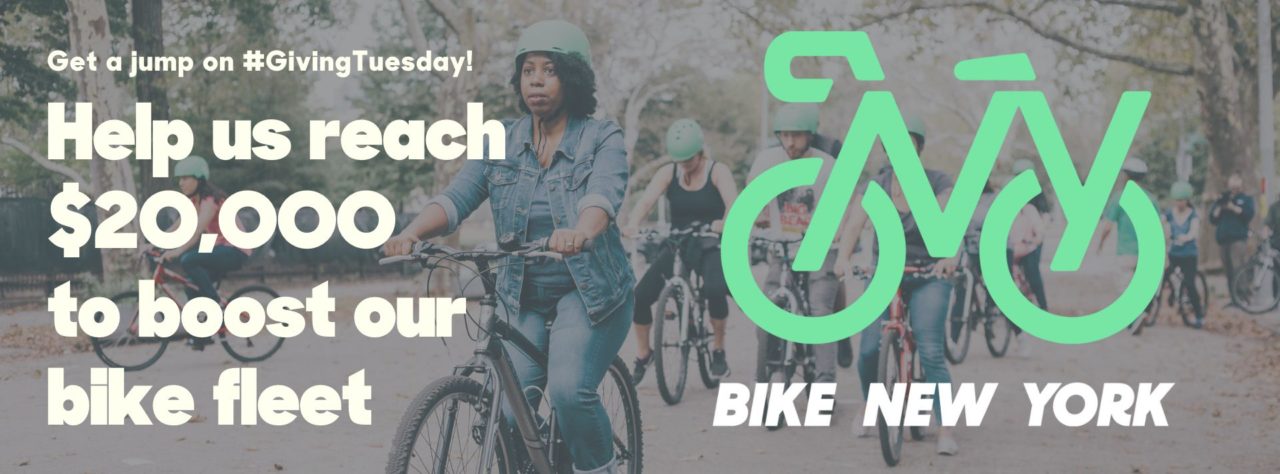November 16, 2022
3 Ways Bike New York is Making NYC a Better Place to Bike (and Live!)
MTA bridge access
Bike New York developed the concept for the Metropolitan Transportation Authority’s bridge access legislation in early 2021 and found strong allies for it in the State Legislature and among the coalition of pro-cycling civic organizations that keep biking moving forward in the city. The legislation required the MTA to develop a new strategic approach to bike transportation, including on its bridges.
We kept up a strong drumbeat of behind-the-scenes information sharing and public messaging that the time had finally come to crack the MTA’s bike bans on bridges. We saw the Legislature pass the measure in June 2021, and Governor Hochul signed it late in the year. MTA leadership took this development to heart and began working quickly and proactively to deliver improvements.
In October of this year, the MTA announced that it would immediately open its Veterans Memorial/Cross-Bay Bridge to cycling. The bridge connects Broad Channel and the Rockaways; it’s the first-ever MTA-operated bridge to allow legal cycling since the creation of the MTA in 1965.

Veterans Memorial/Cross-Bay Bridge
MTA has also announced that it will implement changes on the Bronx-Manhattan Henry Hudson Bridge to allow cycling by 2025. The MTA is additionally in the midst of work on the Manhattan span of the Triborough Bridge that should open it to legal bike use, and is exploring changes to the Triborough’s Queens span to improve and make cycling official there as well (Randall’s Island-Bronx bike trips are already well served by the city’s Hell Gate Connector).
This sudden progress for a set of bridges that have been off-limits to NYC’s cyclists for nearly 60 years is thanks to the enactment of the aforementioned legislation in late 2021.
We look forward to the release of the MTA’s first strategic action plan for cycling in December. We hope it points the way to all seven of the MTA’s bridges becoming bike-friendly. For now, we’re over the moon to be able to report to you that three of the seven spans are either open or on their way to joining the city’s bike network when, two years ago, this possibility was just a glimmer in the city cyclist’s eye.
A plan for a greater, greener bike network
On October 27, the New York City Council unanimously approved legislation requiring a regularly updated citywide greenway plan. The legislation now awaits Mayor Adams’ signature, which we expect before the end of the year.

Councilman Carlina Rivera addressing Greenway supporters on October 27, 2022
The new law requires the city to produce a citywide greenway plan by the end of 2024 that will be updated annually. The goal of the legislation is to provide a transparent project and upgrade pipeline and keep greenway development in the public eye. Anyone who rides a bike knows the joys of being on a fully separated, landscaped bike path like the ones along Jamaica Bay or the West Side of Manhattan. But it’s apparent that new facilities like these are few and far between, and that they don’t connect well to each other. Until now, few new greenway projects entered the planning and construction cycle, maintenance was often weak, and progress in different parts of the city was very uneven.
The city published its last greenway plan in 1993, during Mayor David Dinkins’ administration. We’re anticipating that the new plan and its required updates will lead to steadier progress toward an interconnected citywide greenway system.

Cover for the 1993’s Greenways Project
Bike New York is a founding member of the NYC Greenways Coalition that formed in 2021. We worked with our coalition allies to develop the concept and details for this legislation and to help move it through the City Council’s process this year. Already this year, heightened attention to greenways led Mayor Adams to announce $50 million to upgrade greenways in Queens and Brooklyn, and to announce the start of work on the Queensway, a new greenway right of way on a long-abandoned rail line. We were also very happy to work in support of the city’s successful application for federal funding to create new greenway plans in parts of the city that greenway development has passed by, including working with Senator Schumer’s office to demonstrate strong local support for this step. This will allow the city to get rolling on the new citywide greenway plan almost immediately.
Bike lanes for bikes
While the City’s Street Master Plan law sets ambitious annual targets for implementing new protected bike lanes, anyone who rides in New York City knows that stretches of bike lanes the City considers “protected” are often blocked by cars and trucks.
Bike New York worked throughout last year’s mayoral campaign – including with candidate Eric Adams’ team – to spotlight the problem of bike lane quality, now that quantity is enshrined in law.
That work resulted in Mayor Adams’ announcement in January that the city would begin installing hard barriers along selected bike lanes, and DOT’s subsequent start of a set of “better barriers” tests to try out additional physical materials that better define the city’s bike lanes.
The good news is the hardened bike lanes are improving bike lane integrity in some places, like Crescent Street in Long Island City and Manhattan’s Clinton Street south of East Broadway. The more difficult news is that barriers alone generally are not solving the problem of cars and trucks in bike lanes – DOT needs to do more redesign work with the additional materials, including ways of stopping motor vehicles from entering bike lanes at intersections.
Bike ride through Queens Boulevard (east-bound side)
The city used to note that it needed to fit large street sweepers into bike lanes, and that was the reason for not protecting them. Thanks to Bike New York spotlighting this problem over several years, the Sanitation Department debuted new skinny street sweepers this past summer. However, DOT has yet to begin designing new bike lanes around this new capacity in earnest.
We’re very heartened that the problem of bike lane quality and integrity saw real action in 2022. We’re also seeing some more aggressive design approaches from the current administration, including making Schermerhorn Street in Brooklyn one-way for cars in order to accommodate protected bike lanes. We’re under no illusion that preserving New York’s bike lanes for bikes will be an easy or fast job, and we’ll continue to spotlight problems and push for solutions. Our current campaigns to improve design along Brooklyn’s 4th Avenue and 8th Avenue in Midtown are parts of that effort.
If you, like us, are glad to see these new improvements to bike infrastructure and connectivity in the city, and want to get more people on bikes in 2023, please consider donating during our November fundraising campaign ahead of Giving Tuesday. The donations we receive during this time period will be used to replace portions of our critical bike fleet at Bike New York Community Education Centers across the five boroughs.
Written by Jon Orcutt


